Explore Itsukushima (Miyajima) - Japan Travel, Asia
Floating gently in the tranquil waters of the Seto Inland Sea, Miyajima, officially known as Itsukushima, is one of Japan’s most treasured islands. Just a short ferry ride from Hiroshima, this peaceful destination draws travelers with its spiritual energy, ancient shrines, and wild-yet-gentle sacred deer that roam freely. Renowned for the iconic floating Torii gate of Itsukushima Shrine, Miyajima blends centuries of Shinto belief, Buddhist tradition, and natural beauty into one unforgettable journey.
Population: Approximately 1,500 in 2019.
Economy: Miyajima’s economy is deeply rooted in tourism. Visitors fuel local businesses such as traditional inns (ryokan), souvenir shops, street food vendors, and ferry services.
Landmarks: Famous for Itsukushima Shrine and the Floating Torii Gate, Mount Misen, and the Daisho-in Temple.
Japan
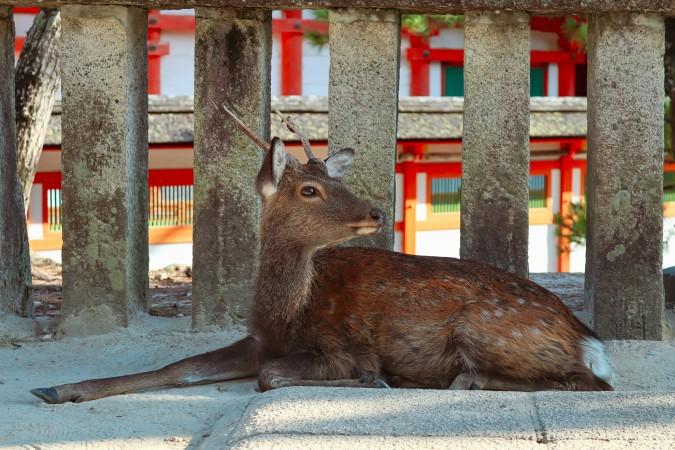
Overview of Miyajima
Historical & Cultural Influence
Miyajima’s spiritual roots run deep. Since ancient times, it has been considered a sacred place where gods dwell. Its name, Itsukushima, meaning “island of worship”, which reflects this reverence. Ordinary people were once forbidden to set foot on the island to preserve its purity.
At the heart of the island’s heritage is the Itsukushima Shrine, built in the 12th century by the powerful warlord Taira no Kiyomori. The shrine, with its crimson-lacquered buildings and floating Torii gate, appears to rise from the sea during high tide. This architectural marvel was designed to honor the Shinto deities of the sea and storms—protecting sailors, merchants, and travelers for generations.
Interaction with the Locals
While Miyajima’s deer might greet you first, it’s the island’s people who offer the warmest welcome. From friendly innkeepers at traditional ryokan to shop owners on Omotesando Street, locals go out of their way to preserve the island’s spirit and share it with visitors.
Tourism here isn’t just about sightseeing but about connection. You’ll often find elderly artisans demonstrating their crafts, restaurant owners proudly preparing fresh oysters or anago meshi, and guides who share stories passed down through generations.

Top Attractions in Miyajima
Itsukushima Shrine and the Floating Torii Gate
Arguably Japan’s most photographed shrine, the Itsukushima Shrine is the heart of Miyajima. This UNESCO World Heritage Site is famed for its vermilion-lacquered Torii gate, which appears to float on the sea during high tide. Walk through the shrine’s elevated boardwalks, explore sacred prayer halls, and time your visit to witness the Torii both at high and low tide. At low tide, you can walk right up to its massive wooden pillars, a powerful and humbling experience.
Mount Misen
Rising 535 meters above sea level, Mount Misen offers panoramic views of the Seto Inland Sea and neighboring islands. This sacred mountain is dotted with Buddhist temples, mystical rock formations, and wild deer. Choose from several hiking trails like the Momijidani Course or take the Miyajima Ropeway to save time. At the summit, you’ll find the Reikado Hall, which houses an eternal flame said to have been burning since the 9th century.
Daisho-in Temple
Often overshadowed by Itsukushima Shrine, the Daisho-in Temple is a spiritual gem tucked into the base of Mount Misen. This historic Shingon Buddhist temple is adorned with colorful prayer flags, serene statues, and moss-covered lanterns. Walk the Henjokutsu Cave, spin the metal prayer wheels, and discover rows of small rakan statues, each with a unique expression. The peaceful ambiance here invites quiet contemplation.
Five-Story Pagoda (Goju-no-to)
Just steps from Itsukushima Shrine, the vibrant Five-Story Pagoda stands as a striking example of Muromachi-era architecture. Built in 1407, this structure blends Buddhist and Shinto elements, with elegant carvings and bold red hues. Although the pagoda’s interior isn’t open to the public, its exterior is a must-see, especially when framed by cherry blossoms in spring or fiery maple leaves in autumn.
Momijidani Park
A favorite during autumn in Japan, Momijidani Park is a peaceful retreat nestled at the foot of Mount Misen. The name means “Maple Valley,” and true to its name, the area bursts into a riot of red, orange, and gold each fall. Cross rustic bridges, follow shaded walking trails, and enjoy quiet moments beneath hundreds of Japanese maple trees. It’s also a great starting point for those hiking up Mount Misen.
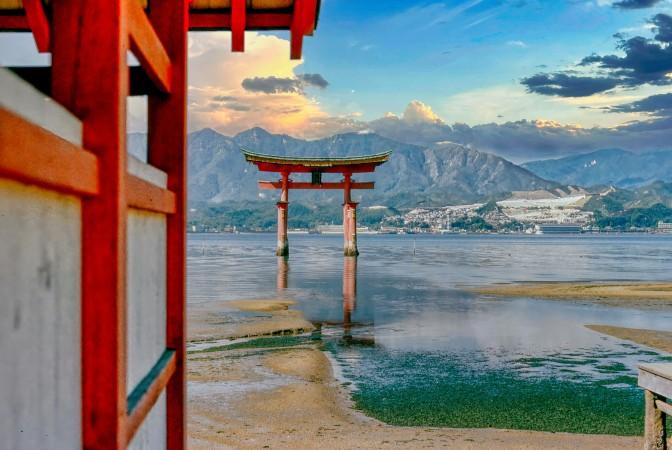
Must-Try Dishes in Miyajima
- Grilled Oysters (Kaki): Miyajima is famous across Japan for its fresh oysters, harvested from the nutrient-rich waters of Hiroshima Bay. Unlike the raw oysters common in the West, here they’re often served grilled over open flames, topped with soy sauce, ponzu, or butter.
- Anago Meshi (Conger Eel Rice Bowl): While unagi (freshwater eel) is popular throughout Japan, anago (saltwater eel) is the local specialty on Miyajima. Served atop a bed of seasoned rice, Anago Meshi is a flavorful yet delicate dish, often brushed with a sweet soy glaze.
- Momiji Manju (Maple Leaf Cakes): A sweet symbol of the island, Momiji Manju are maple-leaf-shaped sponge cakes filled with anko (sweet red bean paste), custard, chocolate, or matcha cream.
- Yaki Udon & Street Nibbles: On a cool day, nothing beats a warm bowl of Yaki Udon, thick wheat noodles stir-fried with vegetables and savory sauce. Local food stalls near the pier or shopping street often serve it fresh off the grill.
- Deep-Fried Oysters (Kaki Furai): A crispier twist on grilled oysters, kaki furai are breaded and deep-fried oysters, typically served with tartar sauce or a lemon wedge. The crispy exterior contrasts beautifully with the juicy oyster inside, making this dish a crowd favorite at both street vendors and izakayas.
- Age Momiji (Fried Momiji Manju): An indulgent street food version of the classic momiji manju, these treats are deep-fried until golden, giving them a crunchy shell and warm, gooey filling. Popular flavors include cheese, chocolate, and custard. Best enjoyed fresh and hot.
- Tamago Kake Gohan (Raw Egg Over Rice): A traditional Japanese breakfast dish, Tamago Kake Gohan involves a fresh raw egg cracked over a steaming bowl of rice, mixed with soy sauce. On Miyajima, some inns elevate it by using locally sourced eggs and artisanal soy sauce for a richer taste.
- Yaki Imo (Roasted Sweet Potato): Often sold from vintage-style carts in colder months, yaki imo (roasted Japanese sweet potatoes) are a nostalgic, warming treat. They’re soft, naturally sweet, and wrapped in a thin caramelized skin. It’s simple, satisfying, and popular with both tourists and locals.
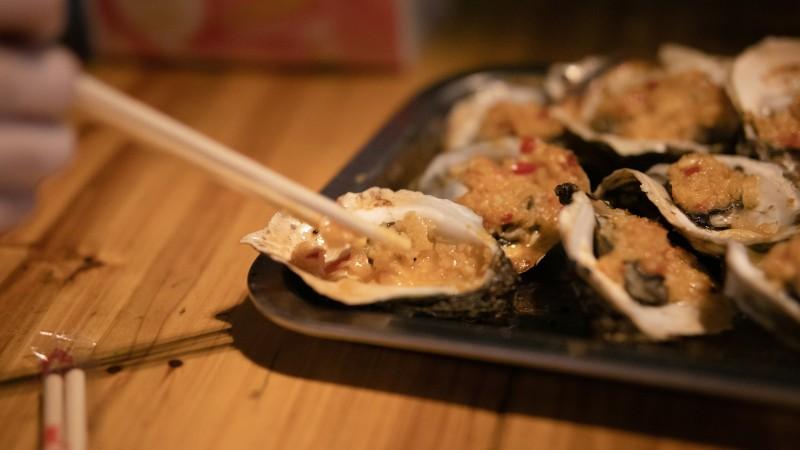
Festivals & Local Celebrations
Miyajima Water Fireworks Festival
Held every August, this is Miyajima’s most spectacular event. Thousands of colorful fireworks light up the sky—and the sea—around the floating Torii gate. What makes this festival truly unique is that many of the fireworks are launched from boats on the water, creating mesmerizing reflections.
Kangen-sai Festival
This elegant celebration takes place in July and honors the Shinto deities of the sea. Dating back to the Heian period, the Kangen-sai involves a procession of ornately decorated boats that carry musicians playing traditional court music (kangen) across the waters surrounding Itsukushima Shrine.
Momiji Festival
Held each autumn in Momijidani Park, this festival celebrates the peak of the maple leaf season. Visitors are treated to cultural performances, tea ceremonies, and local food stalls, all set against the fiery red and gold of Japanese maples.
Daigan-ji Temple Festivals
The lesser-known but equally significant Daigan-ji Temple, located next to Itsukushima Shrine, hosts various Buddhist ceremonies and rituals throughout the year. These include memorial services, prayer events for health and fortune, and seasonal blessings.
Setsubun (Bean-Throwing Festival)
Celebrated in early February, Setsubun is a nationwide Japanese tradition, and on Miyajima, it is hosted at both Itsukushima Shrine and Daisho-in Temple. During the event, priests and local celebrities toss roasted soybeans to drive away evil spirits and welcome good fortune.
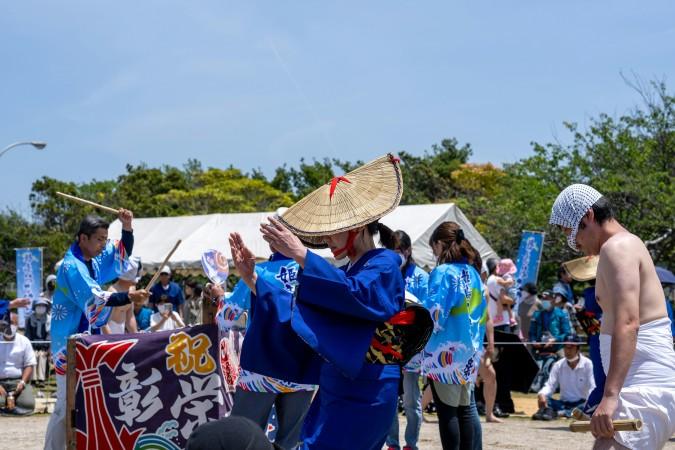
What to Do in Miyajima
Hike Mount Misen
Standing tall at 535 meters, Mount Misen is Miyajima's highest peak and a sacred site in Shingon Buddhism. The hike to the summit offers several trails such as the Momijidani Course and Daisho-in Course, ranging from moderate to challenging. Reaching the top rewards you with panoramic views of the Seto Inland Sea, floating torii gates, and even Hiroshima on clear days. Nature lovers can also spot native deer and Japanese macaques along the way.
Kayak Around the Floating Torii Gate
For a unique angle of the iconic Itsukushima Shrine Torii Gate, try sea kayaking during high tide. Local guides provide all equipment and instruction. This eco-friendly activity allows travelers to get up close to one of Japan’s most photographed UNESCO World Heritage Sites while enjoying calm waters and stunning reflections.
Sunset Viewing
Miyajima sunsets are simply magical. The best spots to witness the changing sky include Tsutsumigaura Beach, the area around Senjokaku Pavilion, and Miyajima’s Omotesando Pier. Photography enthusiasts will love the golden-hour lighting that silhouettes the floating torii gate and shrine structures.
Temple Stays and Zen Experiences
Immerse yourself in Japanese spirituality with a temple stay (shukubo) at Daisho-in Temple, where you can join early morning prayers, practice zazen meditation, and learn about Buddhist rituals. It’s a quiet retreat for introspection and cultural learning.
Kimono Walks and Cultural Strolls
Rent a kimono for the day and stroll along Omotesando Street, Machiya Street, or the serene Momijidani Park. These preserved historical areas are perfect for slow travel photography and local engagement. Shops along the way often offer kimono accessories and tea tastings.
Shopping in Miyajima
- Omotesando Shopping Street: This vibrant pedestrian lane is Miyajima’s main commercial artery, brimming with momiji manju shops, woodcarving stalls, and local art boutiques. It's the perfect place to buy gifts like handmade calligraphy brushes, artisanal ceramics, or lacquerware with island motifs.
- Momiji Manju – Souvenir Staple: No visit to Miyajima is complete without tasting or bringing home momiji manju, maple-leaf-shaped cakes traditionally filled with red bean paste. Many stores now offer modern variations with custard, chocolate, matcha, or even cheese cream fillings.
- Traditional Crafts and Local Woodwork: Miyajima is famous for Miyajima-bori, a style of traditional wood carving used in trays, chopsticks, and wall hangings. Many stores allow you to watch artisans at work and offer engraving services for personalized souvenirs.
- Specialty Food & Sake: Browse shops selling local oyster snacks, dried seaweed, and bottles of Hiroshima sake. These make excellent gifts for food lovers and are often wrapped beautifully in traditional furoshiki cloth.
- Sustainable and Local Artisans: Support local makers by purchasing goods from sustainable concept stores that focus on ethical tourism and minimal-waste packaging. Some products incorporate recycled kimono fabric or reclaimed wood, making each piece unique.
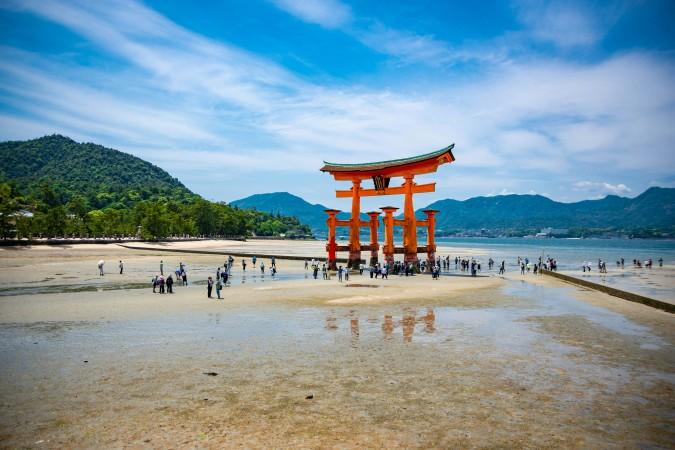
Weather in Miyajima: Best Time to Visit
Spring in Miyajima (March to May)
Spring in Miyajima is one of the most popular times to visit. Temperatures range from 10°C to 20°C (50°F to 68°F), creating the perfect climate for sightseeing and hanami (cherry blossom viewing). Momijidani Park and the area around Itsukushima Shrine bloom into soft shades of pink, making it an Instagram-worthy season.
Summer in Myajima (June to August)
Summers are warm and humid, with average highs reaching up to 31°C (88°F). While the heat can be intense, it's also festival season. The lively Kangensai Festival takes place in July, drawing locals and tourists into a celebration of Shinto music and ritual. Light clothing, sunscreen, and plenty of water are must-haves.
Autumn in Miyajima (September to November)
Autumn rivals spring in terms of beauty. As the maple trees turn brilliant shades of red and gold, places like Daisho-in Temple and Mount Misen become stunning backdrops for hikes and photos. Daytime temperatures average between 12°C and 22°C (54°F–72°F), ideal for exploring comfortably.
Winter in Miyajima (December to February)
Winters in Miyajima are cold but rarely snowy. Temperatures hover around 2°C to 10°C (35°F–50°F). Fewer crowds make this a peaceful time for travelers looking to enjoy the spiritual calm of the island’s shrines and temples. Hot local dishes like Hiroshima-style okonomiyaki and anago meshi feel especially comforting.
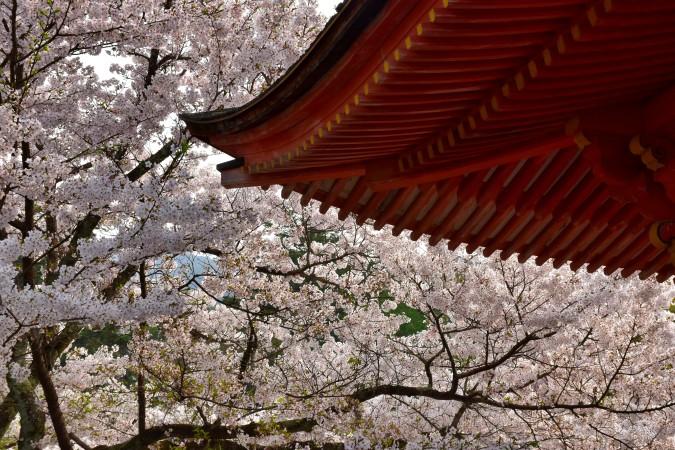
Essential Travel Information
Getting Around Miyajima
- On Foot: The island is mostly pedestrian-friendly. Most attractions, like Daisho-in Temple and Mount Misen, are accessible by walking or hiking.
- Ropeway to Mount Misen: For panoramic views, take the Miyajima Ropeway from Momijidani Park to the summit trail.
- Bicycles: Rentals are available near the ferry terminal, but keep in mind some trails are steep or sacred and may restrict bike use.
ATM & Banking Services
Japan is a largely cash-based society, and Miyajima is no exception. While major souvenir shops or hotels may accept credit cards, local food stalls, small inns, and temple donation boxes often do not.
- ATM at Miyajima Ferry Terminal: Accepts most international cards including Visa, Mastercard, and Plus networks.
- Seven Bank ATM (7-Eleven Hiroshima side): Located near Miyajimaguchi Station before you board the ferry. It’s one of the best options for foreign travelers.
- Post Office ATM: There is a Japan Post Bank ATM on the island with limited international card acceptance—open during business hours only.
Where to Stay in Miyajima
- Traditional Ryokan: For those wanting a full cultural immersion, book a night at a Miyajima ryokan. These Japanese inns provide tatami-mat rooms, futon bedding, yukata robes, and multi-course kaiseki dinners.
- Modern Hotels: For a more contemporary stay, many hotels locate across from the ferry terminal makes it ultra-convenient. They are clean, social, and affordable accommodation.
- Nearby Hiroshima Stays: Some travelers opt to stay in Hiroshima City, using a JR Pass to make the short journey to Miyajima. This option provides more variety in lodging, including international hotel chains and capsule hotels.
Articles for you
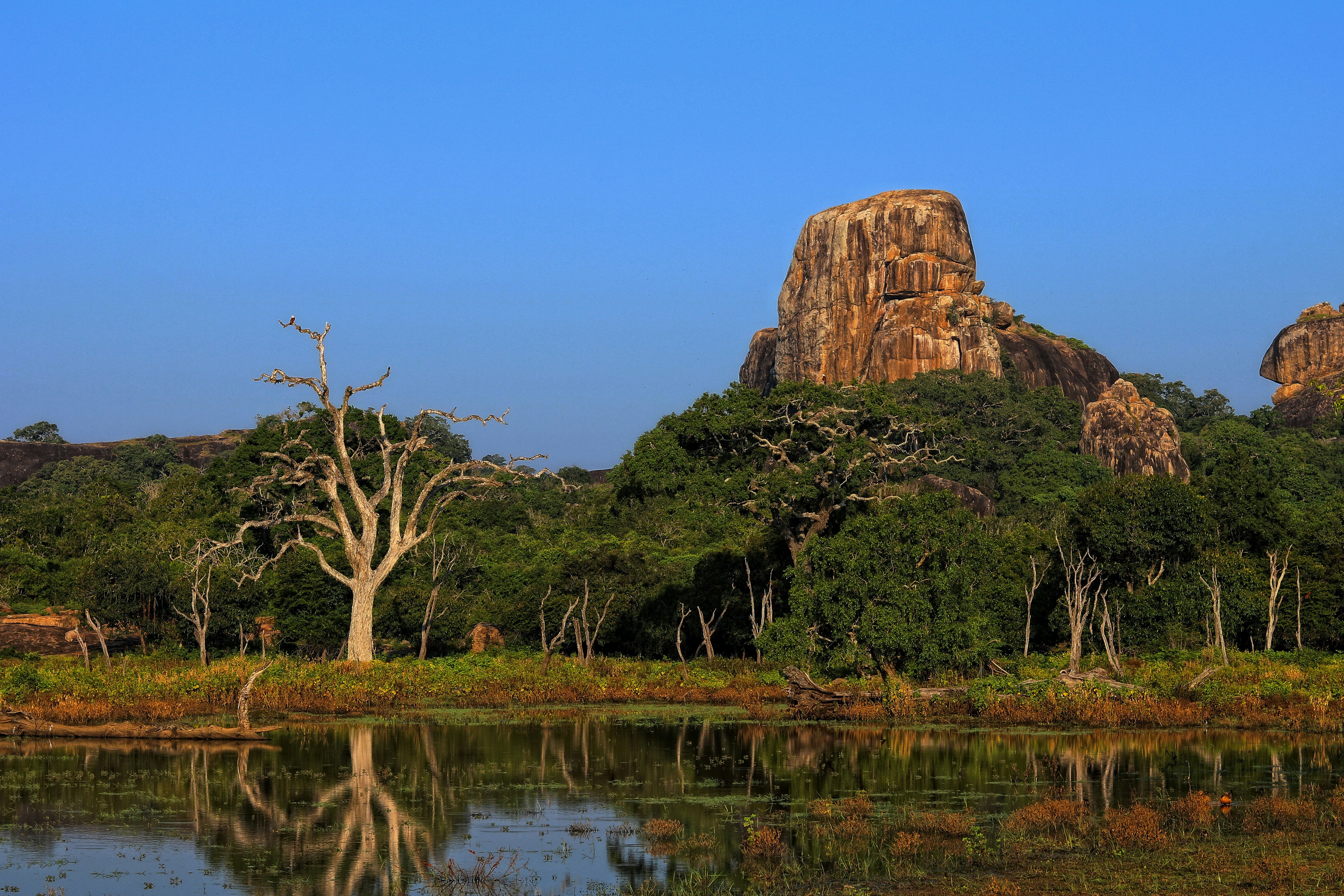
Explore Yala National Park - Sri Lanka Travel, Asia
Tucked away in Sri Lanka’s southeastern corner, Yala National Park is where wild nature meets deep tradition. Known worldwide for its leopard population, the park is also home to elephants, sloth bears, crocodiles, and hundreds of bird species. Beyond wildlife, Yala opens doors to a cultural landscape dotted with ancient temples, Buddhist ruins, and coastal villages. For travelers seeking more than just a safari, Yala offers a chance to explore eco-tourism, local communities, and sacred heritage sites.
Population: The Yala National Park area doesn’t have a human population.
Economy: The economy around Yala National Park thrives on a blend of eco-tourism, agriculture, and local services. Safari tours, eco-lodges, and cultural experiences drive steady income for nearby towns like Tissamaharama and Kataragama, supporting thousands of families.
Landmarks: Famous for Block I of Yala and wildlife encounters, including elephants, sloth bears, crocodiles, and exotic bird species.
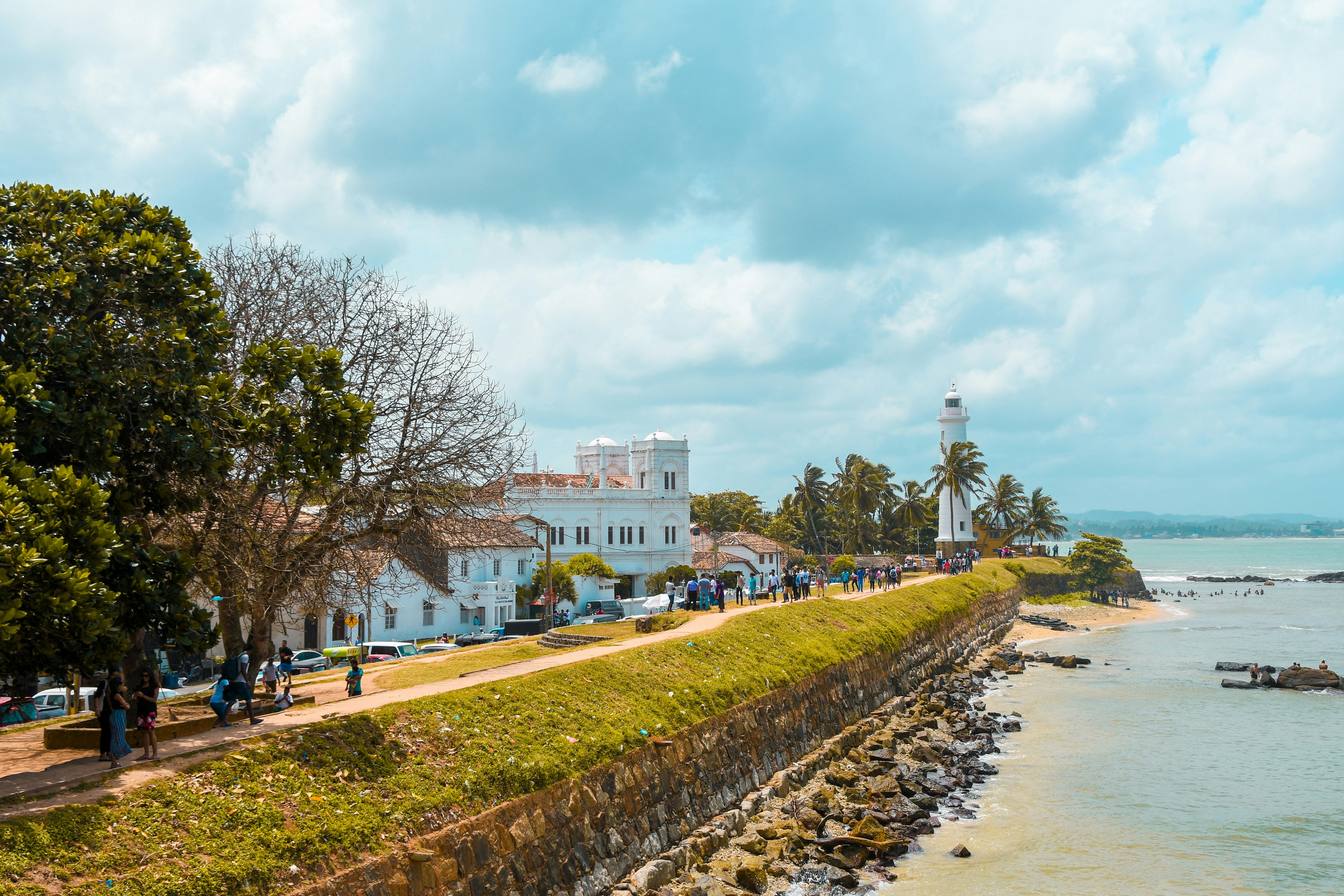
Explore Galle - Sri Lanka Travel, Asia
Nestled on Sri Lanka’s southern coastline, Galle is a vibrant city where history meets the sea. Its cobbled streets, colonial architecture, and serene beaches make it a must-visit destination for travelers seeking a blend of culture, adventure, and relaxation. A UNESCO World Heritage site, Galle captivates visitors with its Dutch Fort, bustling markets, and friendly locals. Whether you’re exploring the ramparts at sunset or savoring fresh seafood by the shore, Galle promises an unforgettable journey into Sri Lanka’s heritage.
Population: Approximately 113,000 in 2023.
Economy: Galle’s economy thrives on tourism, trade, and fisheries. The city’s historic fort, colonial architecture, and coastal charm draw thousands of international visitors each year, making tourism its main economic driver. Fishing remains vital for local livelihoods, supplying fresh seafood across the region.
Landmarks: Famous for the Galle Fort, Dutch Reformed Church & Maritime Museum, and Unawatuna Beach.
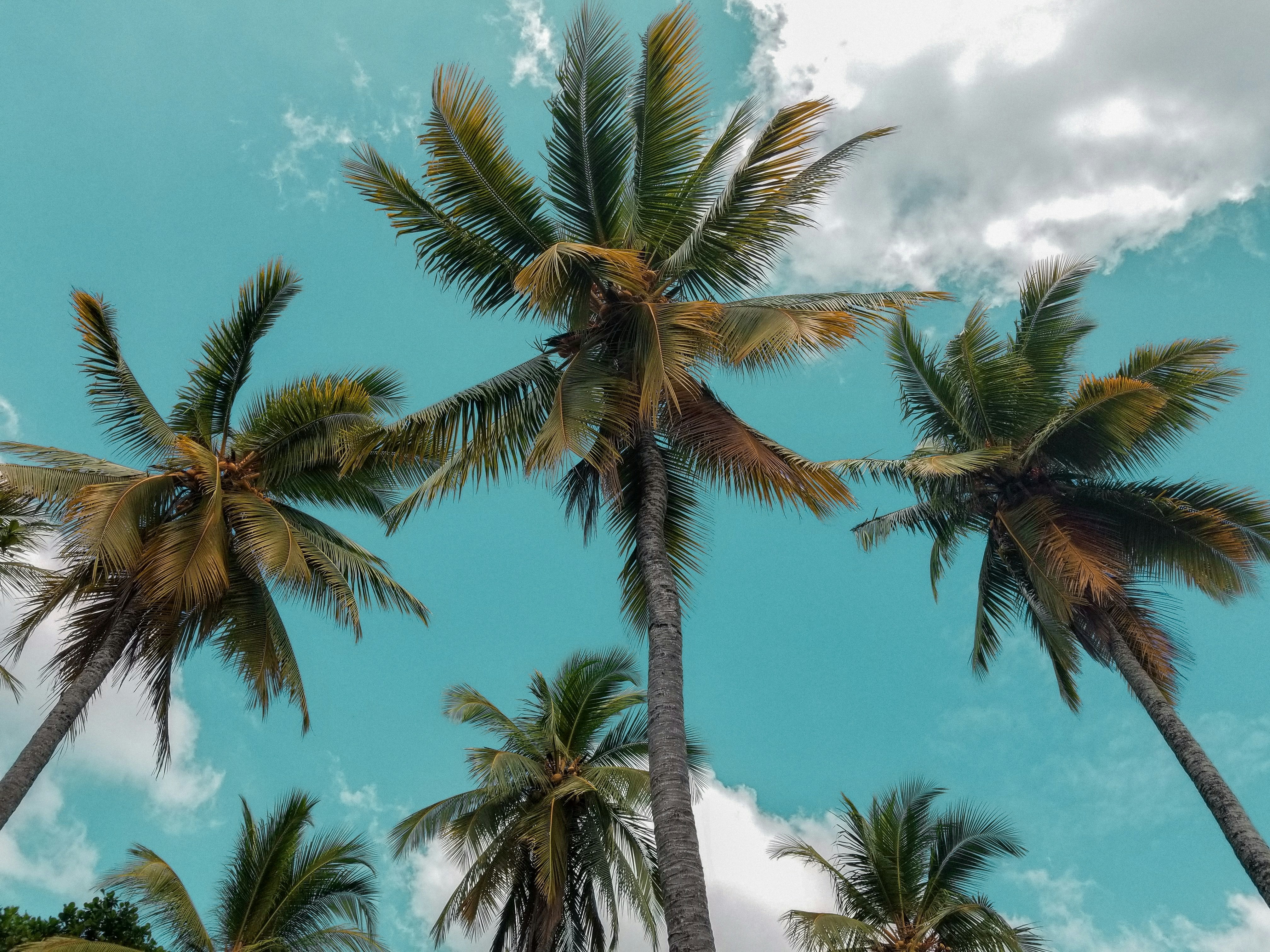
Explore Bentota - Sri Lanka Travel, Asia
Nestled along Sri Lanka’s southwestern coast, Bentota is a tropical paradise that blends golden beaches, vibrant culture, and thrilling adventures. Famous for its calm waters, luxury resorts, and scenic river estuary, Bentota has become a top destination for travelers seeking both relaxation and authentic experiences. From serene beach walks at sunrise to adrenaline-pumping water sports, this coastal town offers a perfect balance of leisure and exploration. With its proximity to Colombo and Galle, Bentota is easy to reach, making it an ideal stop for both short escapes and extended holidays.
Population: Approximately 37,000 in 2023.
Economy: Bentota’s economy thrives mainly on tourism, which drives local businesses such as hotels, restaurants, and wellness retreats. The town also benefits from fishing, coconut cultivation, and handicrafts like wood carving and batik textiles. Many residents rely on the growing demand for water sports and Ayurvedic treatments, making tourism the backbone of both income and employment in the area.
Landmarks: Famous for Bentota Beach, Bentota River Safari, and Kande Vihara Temple.
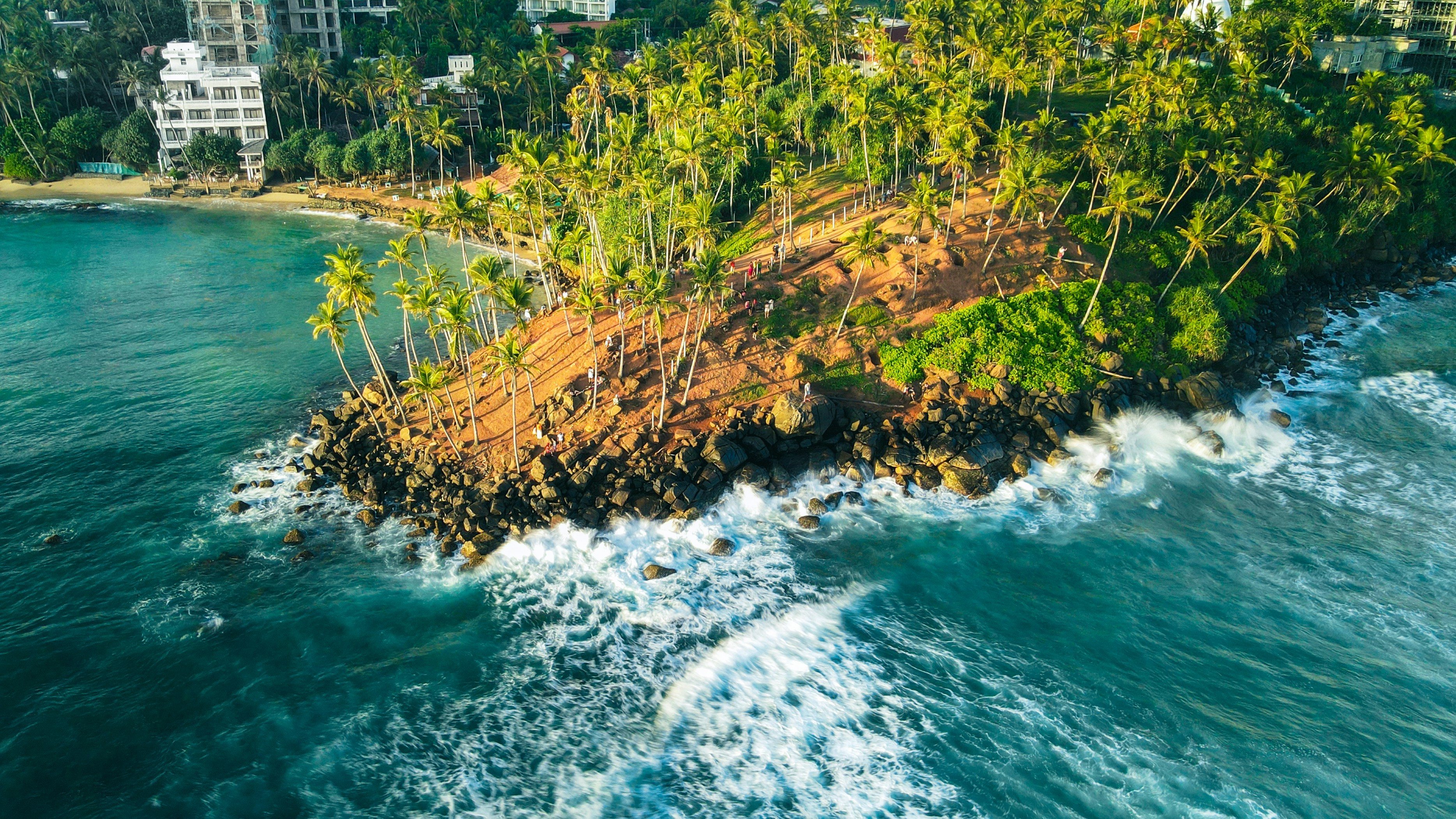
Explore Mirissa - Sri Lanka Travel, Asia
Mirissa is a charming coastal town on Sri Lanka’s southern shoreline. Known for its golden beaches, turquoise waters, and vibrant marine life, it has become a must-visit stop for travelers exploring the island. Many come for whale watching, surfing, and sunset views at Coconut Tree Hill, but Mirissa offers much more than postcard beauty. The fishing boats you see anchored by the bay carry generations of stories. Local traditions, delicious cuisine, and a laid-back rhythm of life shape every visitor’s experience.
Population: Approximately 4,700 in 2023.
Economy: Mirissa’s economy is largely shaped by its coastal location. Fishing has long been the backbone of local livelihoods, with generations relying on the Indian Ocean for income. In recent decades, tourism has become the main driver of growth, thanks to whale watching, surfing, and beachside hospitality.
Landmarks: Famous for Mirissa Beach, Coconut Tree Hill, and Parrot Rock Bridge.
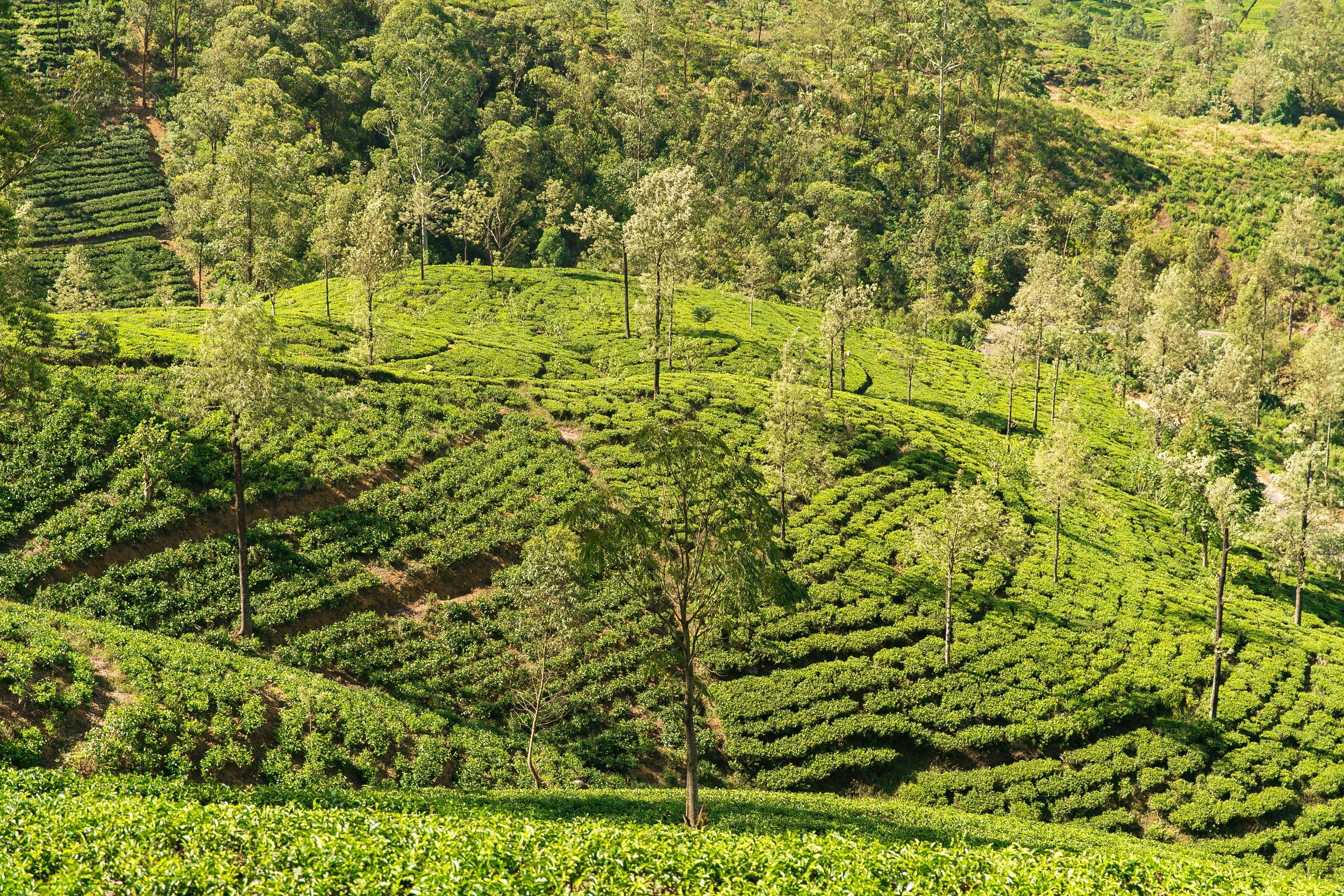
Explore Nuwara Eliya - Sri Lanka Travel, Asia
Tucked away in the Central Highlands of Sri Lanka, Nuwara Eliya is often called “Little England”. With its rolling tea plantations, cool misty mornings, and colonial charm, this mountain town feels like a step into another world. Travelers come here to breathe fresh air, walk through flower gardens, sip the finest Ceylon Tea, and enjoy a pace of life far from the island’s busy cities. Whether you’re drawn by scenic landscapes, heritage architecture, or the warmth of its people, Nuwara Eliya is a destination that blends nature, culture, and history in perfect harmony.
Population: Approximately 781,000 in 2023.
Economy: Nuwara Eliya’s economy thrives mainly on tea production, as it sits in the heart of Sri Lanka’s central highlands, famous worldwide for Ceylon Tea. The city also benefits from a growing tourism industry, attracting visitors with its colonial charm, cool climate, and scenic landscapes.
Landmarks: Famous for Gregory Lake, Hakgala Botanical Garden, and Victoria Park.
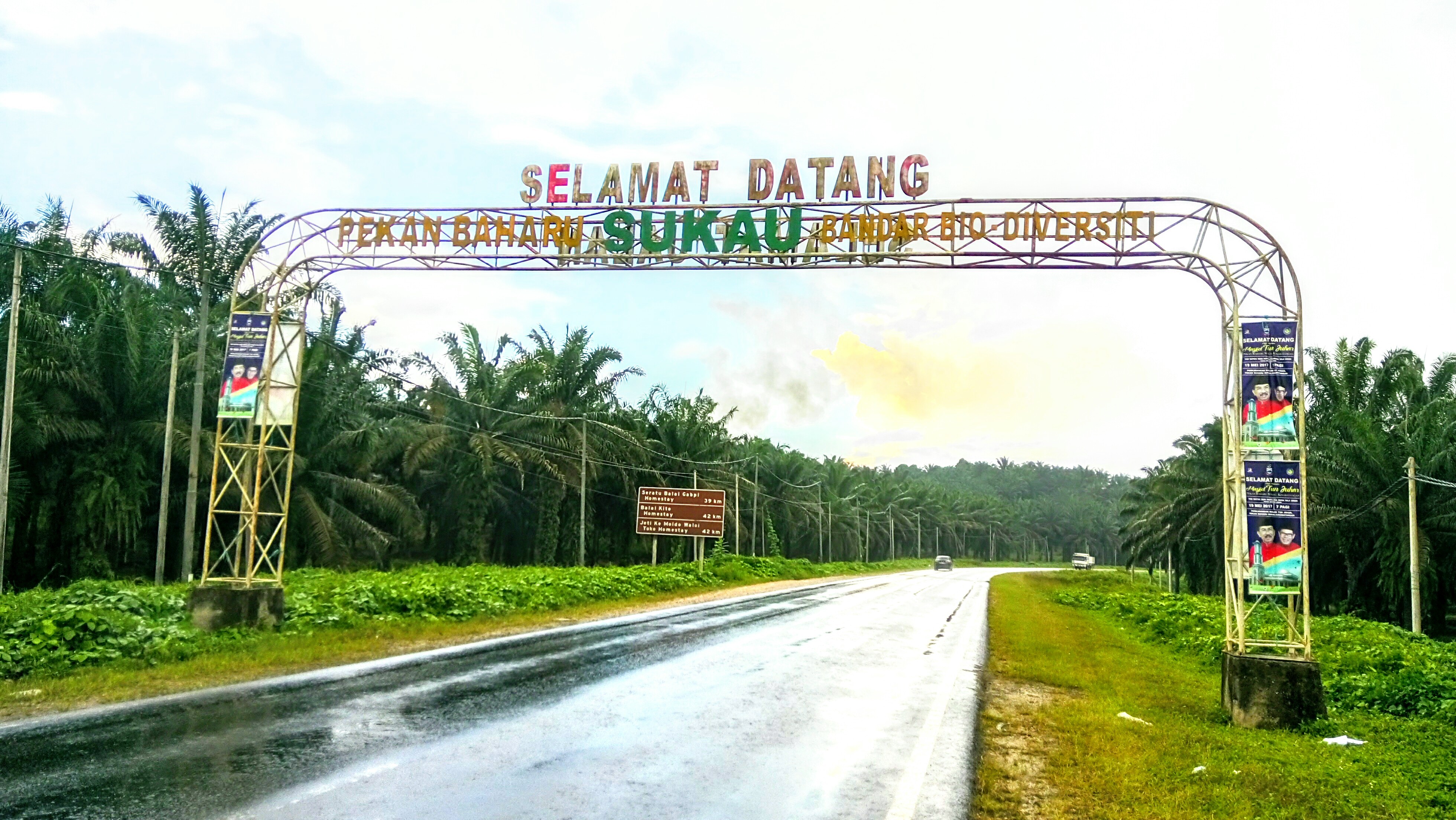
Explore Sukau - Malaysia Travel, Asia
Nestled on the banks of the Kinabatangan River in Sabah, Malaysian Borneo, Sukau is a destination where wildlife, culture, and conservation come together. Known as one of Asia’s top spots for river safaris and eco-tourism, this quiet village offers a front-row seat to encounters with Bornean orangutans, pygmy elephants, proboscis monkeys, and exotic birdlife.
Population: Approximately 1,400 in 2019.
Economy: Sukau’s economy is shaped by its riverine location and natural resources. Traditionally, the Orang Sungai community relied on fishing, small-scale farming, and forest gathering for their livelihood. Today, the village has shifted toward eco-tourism, with river cruises, jungle trekking, and homestays providing income.
Landmarks: Famous for the Kinabatangan River cruises, Gomantong Caves, and Ox-bow lakes and wetlands.
